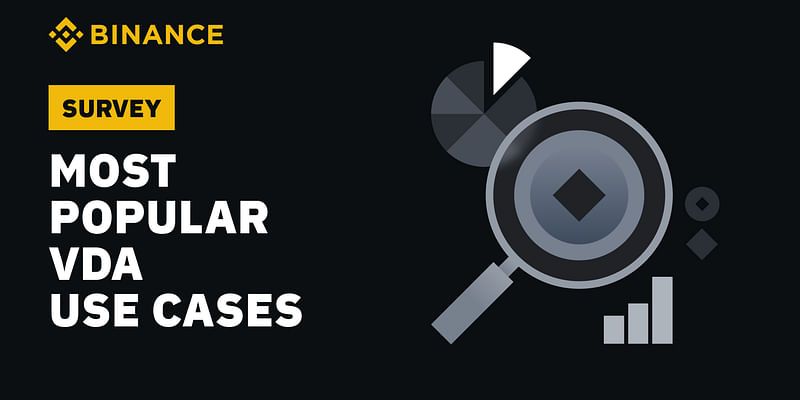
The virtual digital assets (VDA) landscape in the Indian subcontinent has witnessed a remarkable uptick in adoption, driven by factors such as increasing awareness and a growing tech-savvy population. Signs of an upcoming bull market have intensified interest, with many viewing VDAs as a viable investment option.
As with any investment, the digital asset market poses risks that investors must be aware of. Chief among these are the persistent threats of hackers and fraud, which are prevalent globally and can significantly impact individual investors. The decentralized nature of VDAs, while offering benefits, also presents challenges regarding investor protection.
Investing in VDAs carries inherent risks due to their volatility. Prices can experience rapid fluctuations, and inexperienced investors may fall victim to market manipulation or make uninformed decisions based on speculation.
Understanding the VDA industry: A primer for informed investments
One of the primary challenges in the VDA space is the prevalence of misinformation and a general lack of awareness. The VDA space is rife with complex concepts, and uninformed investors may be susceptible to falling victim to scams or making poor investment choices.
Before diving into the world of VDA investments, it is imperative to build a strong foundation of knowledge about blockchain technology. This understanding can enhance one’s ability to make informed investment decisions and help navigate the complex landscape of digital assets. Let’s explore the fundamental aspects of blockchain technology.
Foundational knowledge
Blockchain technology
Blockchain is the underlying technology that powers cryptocurrencies. It is a decentralized and distributed ledger that records transactions across a network of computers.
Understanding the concept of blocks, nodes, consensus mechanisms (such as proof-of-work and proof-of-stake), and the immutability of the blockchain is crucial.
VDAs
VDAs are digital or virtual tokens or assets that use cryptography for security. Bitcoin (BTC), Ethereum (ETH), and Binance Coin (BNB) are some well-known examples. Non-fungible tokens (NFTs) such as Bored Ape Yacht Club and Pudgy Penguins are also VDAs, but they are different in functionality and purpose than the most common VDAs, which are usually digital assets such as Bitcoin.
Recognizing the differences between various VDAs, including their purposes and functionalities, is key to making informed decisions.
Wallets
VDA wallets are digital tools that allow users to store and manage their digital assets. Wallets can be hot (online) or cold (offline), custodial or non-custodial.
Understanding the types of wallets and their security implications is essential for safeguarding one’s investments.
Exchanges
VDA exchanges are platforms where users can buy, sell, and trade VDAs. Centralized exchanges (CEXs) operate with intermediaries, while decentralized exchanges (DEXs) facilitate peer-to-peer transactions.
Knowing the advantages and disadvantages of different exchanges helps in choosing platforms that align with one’s investment goals.
Common terms and misconceptions
1. Common terms
Fiat currency: Traditional government-issued currency (e.g., USD, EUR, INR).
Altcoin: Short for “alternative coin”. Any cryptocurrency other than Bitcoin.
Mining: The process of validating transactions on a blockchain by solving complex mathematical problems.
ICO (initial coin offering): A fundraising method for new VDA projects.
Market cap: Short for “market capitalization”. The total value of a VDA in circulation.
2. Misconceptions
VDAs are anonymous. While transactions can be pseudonymous, they are not entirely anonymous. Understanding privacy implications is crucial.
All ICOs are legitimate. ICOs can be risky, and not all projects are trustworthy. Due diligence is essential before participating in token sales. They share their name with initial public offerings (IPOs) in traditional stock exchange terminology. Like IPOs, ICOs share the same risks stemming from their inherent volatility.
VDAs are a get-rich-quick scheme. Successful VDA investment requires patience, research, and risk management. Viewing it as a guaranteed way to get rich quickly is a huge misconception.
The crypto space is rife with complex concepts, and uninformed investors can be susceptible to falling victim to scams or making poor investment choices. Platforms such as Binance Academy and Binance Research offer accessible and comprehensive resources, making them valuable tools for navigating the VDA landscape.
Unlocking the potential of VDAs: Beyond investments
According to a Binance Survey, a substantial 45% of respondents view crypto as more than just an investment; they see it as an additional source of income. This signifies a shift in perception, with VDAs evolving into a tool for financial empowerment beyond traditional income streams. Additionally, 36% of respondents see VDAs as a pathway to financial independence, indicating a growing recognition of its potential to reshape economic narratives. Users also see VDAs as an alternative for financial access for unbanked customers globally, where traditional banks and other financial instruments have been unable to penetrate.
Expanding use cases
The increasing adoption of VDAs in India has been accompanied by a diverse range of use cases.
Alternative payment methods: VDAs are increasingly being embraced as an alternative payment method in various sectors. From online retail to service industries, the ease and speed of crypto transactions are gaining traction.
Remittances: The Indian subcontinent, with a large diaspora spread across the globe, stands to benefit significantly from the use of VDAs in remittances. The decentralized nature of VDA transactions can streamline cross-border money transfers and reduce the associated costs.
Tailored investment strategies: Individuals must consider their unique needs, financial goals, and risk tolerance when venturing into the VDA space. Unlike traditional investments, the VDA market offers a wide array of options and opportunities, demanding a strategic approach that aligns with individual aspirations.
Understanding risk profiles
Investing in VDAs demands a nuanced understanding of one’s risk profile, encompassing factors such as risk tolerance, investment goals, and time horizon. This personalized approach is pivotal for aligning choices with individual needs and preferences.
Investors must weigh the options between CEXs and DEXs based on factors such as liquidity, convenience, and security. Additionally, the choice between custodial and non-custodial wallets hinges on individual preferences for convenience and control over security. Custodial wallets, managed by third-party providers, offer ease of use but are more susceptible to hacking. Non-custodial wallets provide complete control over private keys, prioritizing security and autonomy.
By tailoring choices to their risk profiles, users can navigate the complexities of the crypto landscape with confidence and purpose, ensuring a secure and rewarding investment experience.
The road ahead
As the Indian subregion embraces the VDA revolution, investors must approach this burgeoning market with caution and knowledge. While the potential for financial gains is significant, the risks associated with hacking, fraud, and market volatility cannot be ignored. Misinformation and a lack of awareness exacerbate these risks, emphasizing the need for education.
By taking advantage of educational resources, investors can equip themselves with the tools necessary for navigating the VDA landscape responsibly. The rise of VDAs in the region holds immense promise. With the proper knowledge, investors can capitalize on opportunities and help establish a safer, more informed VDA ecosystem.










